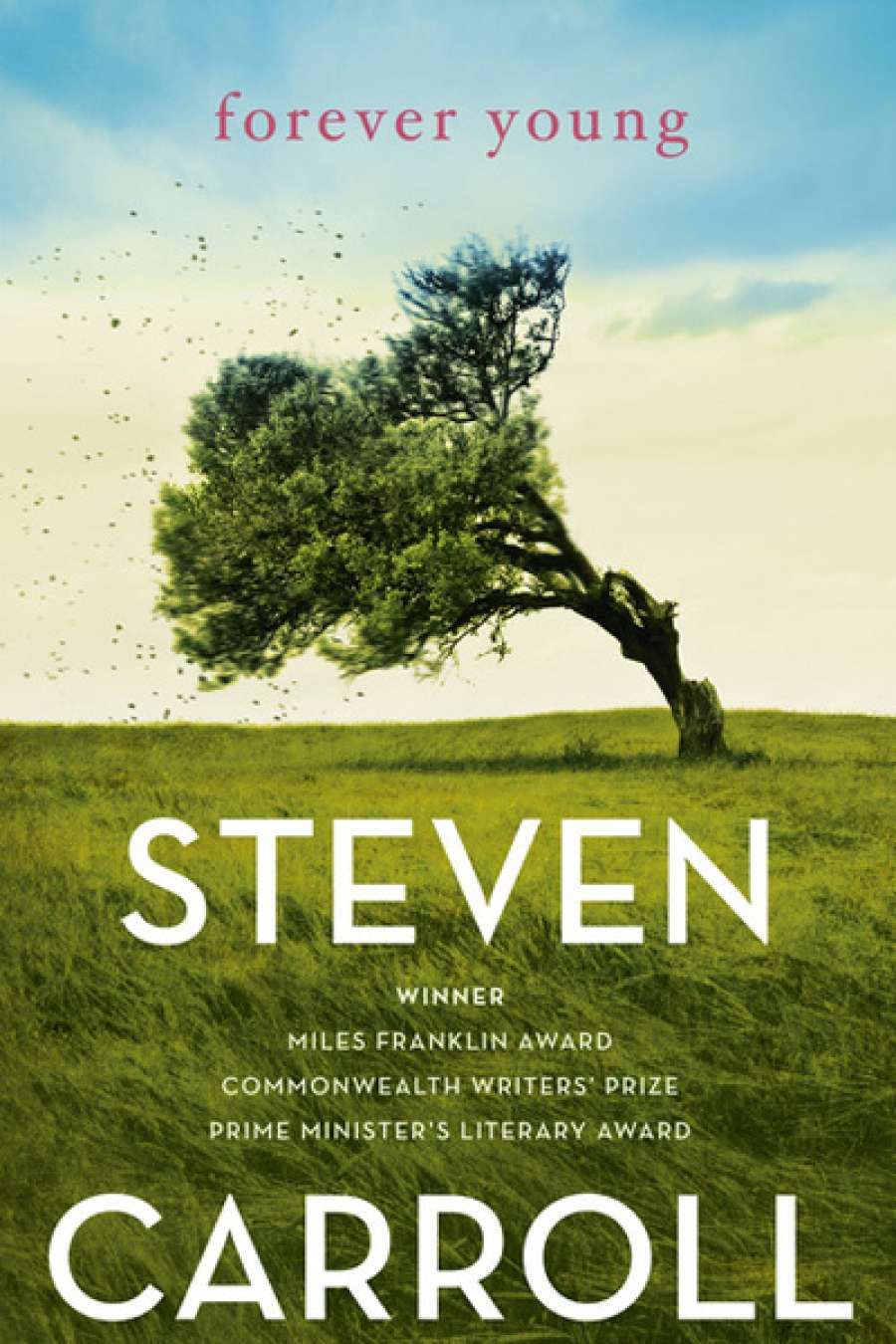
- Free Article: No
- Contents Category: Fiction
- Custom Article Title: Kerryn Goldsworthy reviews 'Forever Young' by Steven Carroll
- Custom Highlight Text: Most Australians, if asked to name a date they associate with the name Gough Whitlam, would say ‘11 November 1975’. Steven Carroll subverts this expectation at the outset ...
- Book 1 Title: Forever Young
- Book 1 Biblio: Fourth Estate, $29.95 pb, 342 pp, 9780732291228
Michael is now in his twenties, his mother Rita in her fifties. Vic figures in this book only as an absence, while Rita thinks about what her life has been so far and what she might do with it now. The musings and ruminations of all the characters’ inner lives over the last three months of 1977 are set in counterpoint to the brutal world of political power in Canberra, where a man from Michael’s student days, a Whitlam follower turned conservative, sets in motion a weirdly amoral experiment in rumour-mongering with tragic results that will reverberate through his own private life.
‘Forever Young’ is the title of a Bob Dylan song that originally appeared in 1974, an allusion to the novel’s exploration of nostalgia for the sweet bird of youth. It also fits the story as a kind of soundtrack: in the mid-1970s this song was in the air, emanating from home stereos and car radios and in local pubs. And the story begins with one of the main characters sensing a sea change in his life and consciously putting away childish things: he abandons his dream of becoming a rock star, sells his Rickenbacker guitar, leaves the band he has played with, and rather brutally dumps his sort-of girlfriend Mandy, who takes it hard.
The phrase ‘forever young’ is also an oxymoron, and the paradox it names – the condition of being at once both in and out of time – is at the heart of this novel, as with so much of Carroll’s fiction. A World of Other People (2013) was the second in another series he is writing parallel with the Glenroy books: four planned novels that each use one of T.S. Eliot’s Four Quartets as a starting point and touchstone of the narrative. This other series mirrors Eliot’s own preoccupation with the passing of time, and Forever Young is a reminder of how closely the two series are linked. It seems a big jump from Eliot’s ancient, myth-rich England to the factories, milk bars, and dusty paddocks of a mid-century outer Melbourne suburb, but human beings negotiate the passage of time and the workings of memory in much the same way, no matter where they are.
 Steven Carroll (photograph by Natalie Walker)
Steven Carroll (photograph by Natalie Walker)
Eliot is not the only ghostly giant of literature to haunt these pages; Patrick White once remarked that he ‘wanted to discover the extraordinary behind the ordinary’. This has been Carroll’s aim with the Glenroy series: ‘social realism had its place in the conception of things,’ he has said, ‘but I also knew that I had to find another way of depicting ordinary suburban life.’ He has made this harder for himself by keeping his writing determinedly secular, avoiding the bright patchwork mysticism that gives White’s ‘ordinary’ characters their depth and breadth. The enriching and exoticising of Carroll’s suburban characters is done in Forever Young through their perception of time and memory, as they relive significant moments and find meaning in the connections to be made between past and present.
‘The enriching and exoticising of Carroll’s suburban characters is done in Forever Young through their perception of time and memory’
Carroll also avoids White’s dense and ornamental prose; his style, already well established in the previous novels, is clear and unadorned, working through rhythm and through the repetition of certain key words and phrases. It may take a while for a reader new to Carroll’s work to realise that these repetitions are deliberate, like the chorus of a song, and to realise further that what does look at first glance like simple social realism is actually something rather different. The repetition technique doesn’t always quite work; it has a kind of sonority and portentousness that hasn’t always been earned by the subject matter, straying towards the orotund and solemn.
This feature of Carroll’s style is marked and mannered, and like all idiosyncratic writing styles it won’t have universal appeal, but reading this book has much in common with the reading of poetry. You have to get into its rhythm: to slow down, step back, discern the larger patterning, and think twice about what you’re being told.


Comments powered by CComment